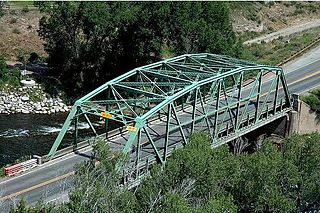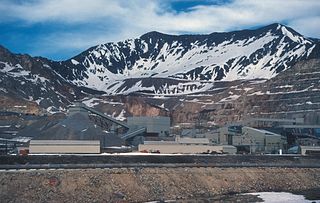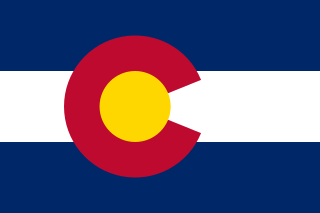

Sweet Home Mine is a mine near Alma, Colorado, United States. It was founded in 1873 as a silver mine. [2] It is best known as the source of the famous rhodochrosite crystals "Alma King", displayed at the Denver Museum of Nature and Science, and "Alma Rose", displayed at the Rice Northwest Museum of Rocks and Minerals in Oregon.

Alma is a statutory town located in Park County, Colorado, United States. The town population was 270 at the 2010 United States Census.

The United States of America (USA), commonly known as the United States or simply America, is a country comprising 50 states, a federal district, five major self-governing territories, and various possessions. At 3.8 million square miles, the United States is the world's third or fourth largest country by total area and is slightly smaller than the entire continent of Europe. With a population of over 327 million people, the U.S. is the third most populous country. The capital is Washington, D.C., and the most populous city is New York City. Most of the country is located contiguously in North America between Canada and Mexico.
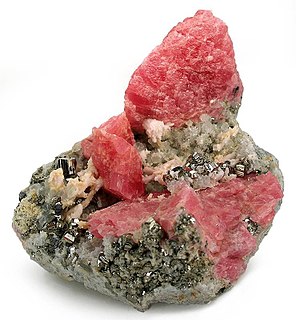
Rhodochrosite is a manganese carbonate mineral with chemical composition MnCO3. In its (rare) pure form, it is typically a rose-red color, but impure specimens can be shades of pink to pale brown. It streaks white, and its Mohs hardness varies between 3.5 and 4. Its specific gravity is between 3.5 and 3.7. It crystallizes in the trigonal system, and cleaves with rhombohedral carbonate cleavage in three directions. Crystal twinning often is present. It is transparent to translucent with refractive indices of nω=1.814 to 1.816, nε=1.596 to 1.598. It is often confused with the manganese silicate, rhodonite, but is distinctly softer.
Contents
Specimens of Sweet Home Mine rhodochrosite are also displayed at the geology museum at the Colorado School of Mines, and in the Royal Ontario Museum, the Houston Museum of Natural Science, and in many other museums and hundreds of private collections.

Colorado School of Mines, also referred to as "Mines", is a public teaching and research university in Golden, Colorado, devoted to engineering and applied science, with special expertise in the development and stewardship of the Earth's natural resources. In every QS World University Ranking from 2016 to 2019, the university was ranked as the top institution in the world for mineral and mining engineering.
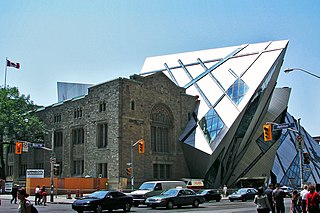
The Royal Ontario Museum is a museum of art, world culture and natural history in Toronto, Ontario, Canada. It is one of the largest museums in North America and the largest in Canada. It attracts more than one million visitors every year, making the ROM the most-visited museum in Canada. The museum is north of Queen's Park, in the University of Toronto district, with its main entrance on Bloor Street West. Museum subway station is named after the ROM and, since a 2008 renovation, is decorated to resemble the institution's collection.
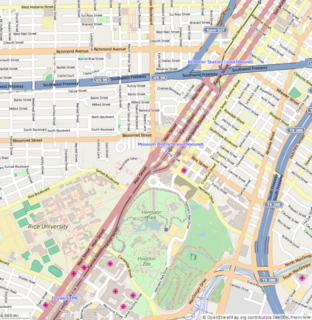
The Houston Museum of Natural Science is a natural history museum located on the northern border of Hermann Park in Houston, Texas, United States. The museum was established in 1909 by the Houston Museum and Scientific Society, an organization whose goals were to provide a free institution for the people of Houston focusing on education and science. Museum attendance totals over two million visitors each year. The museum complex consists of a central facility with four floors of natural science halls and exhibits, the Burke Baker Planetarium, the Cockrell Butterfly Center, and the Wortham Giant Screen Theatre. The museum is one of the most popular in the United States and ranks just below New York City's American Museum of Natural History and Metropolitan Museum of Art and the M. H. de Young Memorial Museum in San Francisco in most attendance amongst non-Smithsonian museums. Much of the museum's popularity is attributed to its large number of special or guest exhibits.

